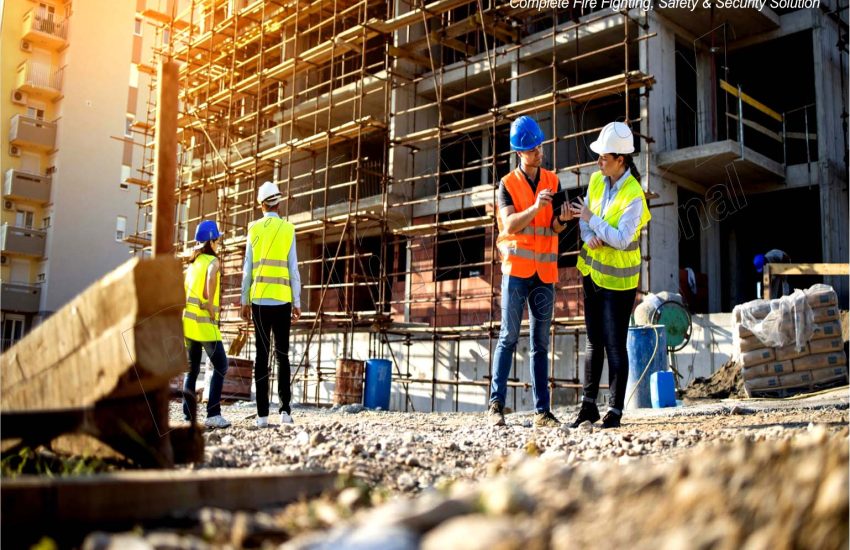A fire safety audit is a vital process for evaluating the effectiveness of fire safety measures within a building or workplace. It analyzes the property’s fire safety practices, identifies potential hazards, and recommends improvements to protect occupants, employees, and property. Conducting a fire safety audit ensures compliance with regulations, reduces risks, and helps prevent fire-related incidents.
In this article, we will explore the key elements of a fire safety audit, the benefits it offers, and the steps involved in conducting one. We will also discuss the importance of regular audits to maintain a safe and secure environment.
What is a Fire Safety Audit?
A fire safety audit is a comprehensive evaluation of fire safety systems, procedures, and practices in a building or workplace. The goal is to assess whether the property meets fire safety regulations and industry standards. The audit also identifies fire hazards or vulnerabilities that could compromise safety in the event of a fire.
Key Areas Covered in a Fire Safety Audit:
- Fire Prevention Systems: Examining fire alarms, sprinkler systems, and extinguishers.
- Escape Routes and Emergency Exits: Ensuring these are accessible and compliant with fire safety standards.
- Employee Training: Assessing training on fire safety protocols and emergency response.
- Flammable Substances: Analyzing potential risks from combustible materials and chemicals.
Why is a Fire Safety Audit Important?
1. Compliance with Legal Regulations
A safety ensures that your property meets both local and national fire safety regulations. It helps avoid penalties and legal issues that could arise from non-compliance. Regulatory bodies often require regular audits to confirm adherence to fire safety standards.
2. Protecting Lives and Property
The primary aim of a fire safety audit is to safeguard lives. Identifying fire risks and vulnerabilities allows you to take preventive measures, reducing the chance of a fire and its potential impact.
3. Insurance and Liability
Many insurance policies require businesses to demonstrate compliance with fire safety regulations. A fire safety audit ensures your property is adequately protected, which can lower insurance premiums and reduce liability in the event of a fire.
4. Reducing Fire Risks
Regular audits help uncover potential hazards such as faulty electrical wiring, improperly stored flammable materials, or blocked fire exits. By addressing these issues proactively, you reduce the risk of fire-related incidents.
5. Business Continuity and Reputation
A fire can disrupt business operations and damage your reputation. A fire safety audit ensures that emergency procedures and business continuity plans are in place. This reduces the impact of a fire and helps your business recover quickly.
Key Components of a Fire Safety Audit
1. Fire Prevention Systems
The audit starts with a thorough inspection of fire prevention and suppression systems, such as:
- Fire alarms: Are they tested regularly and in the right locations?
- Fire extinguishers: Are they easily accessible, the correct size, and properly placed?
- Sprinkler systems: Are they installed, maintained, and functioning according to regulations?
- Smoke detectors and emergency lighting: Are they operational, and do they guide occupants to safety?
2. Fire Escape Routes and Emergency Exits
An effective fire escape plan is essential. The audit checks if:
- Escape routes are clearly marked and unobstructed.
- Emergency exits are well-lit and easily accessible, including for people with disabilities.
3. Fire Safety Training and Procedures
Employees must be trained on fire safety and emergency procedures. The audit evaluates:
- Whether staff has received proper training.
- The effectiveness of fire drills and evacuation plans.
- The presence of designated fire marshals or emergency coordinators.
4. Fire Hazards and Risk Assessment
The audit identifies potential fire hazards, such as:
- Flammable materials like chemicals, gas cylinders, or paper products.
- Faulty electrical wiring and equipment.
- Proximity of heat sources to combustible materials.
- Storage practices for flammable substances.
5. Fire Safety Documentation
Key documents reviewed in the audit include:
- Fire risk assessments and fire safety plans.
- Records of fire drills, inspections, and maintenance.
- Compliance certificates and documentation related to fire safety regulations.
Steps Involved in Conducting:
1. Planning and Preparation
Before the audit begins, gather necessary documents, such as building floor plans, fire safety policies, and maintenance records. Identify the scope of the audit and focus areas that require attention.
2. Site Inspection
Conduct a detailed inspection of the property to assess the condition of fire safety systems and equipment. Ensure that fire exits, alarms, sprinklers, and other safety measures are in good working order.
3. Risk Assessment
Identify and evaluate potential fire risks on the premises. Assess the likelihood and potential consequences of a fire occurring.
4. Evaluation of Fire Safety Systems
Review the functionality and effectiveness of fire safety systems, such as alarms, extinguishers, and sprinklers. Ensure compliance with regulatory requirements.
5. Employee and Staff Interviews
Interview employees to gauge their knowledge of fire safety procedures and emergency response plans. Evaluate how prepared they are for a fire emergency.
6. Reporting and Recommendations
After the audit, create a detailed report that outlines:
- Findings on compliance and fire hazards.
- Recommendations for improvement.
- An action plan with specific timelines for addressing risks.
7. Follow-Up and Corrective Actions
After implementing changes, schedule follow-up inspections to verify that corrective actions have been carried out successfully.
How Often Should a Fire Safety Audit Be Conducted?
The frequency of a fire safety audit depends on factors like the building’s size, type, and usage. However, it’s recommended that:
- Annual audits are conducted for most businesses and workplaces.
- A new audit should take place after significant renovations or modifications to the fire safety systems.
- Following a fire-related incident or near-miss, a reassessment is necessary to improve safety measures.
Conclusion
A fire safety audit is crucial for ensuring the safety of everyone on your property. It helps identify potential fire hazards, evaluate the effectiveness of safety systems, and recommend improvements. By conducting regular audits, you can reduce the risk of fire-related incidents, comply with fire safety regulations, and protect both lives and property.


